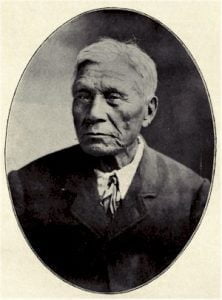Articles of agreement and convention made and concluded at the treaty-ground, Camp Stevens, Walla-Walla Valley, this ninth day of June, in the year one thousand eight hundred and fifty-fire, by and between Isaac I. Stevens, governor and superintendent of Indian affairs for the Territory of Washington, on the part of the United States, and the undersigned head chiefs, chiefs, head-men, and delegates of the Yakama, Palouse, Pisquouse, Wenatshapam, Klikatat, Klinquit, Kow-was-say-ee, Li-ay-was, Skin-pah, Wish-ham. Shyiks, Ochechotes, Kah milt-pah, and Se-ap-cat, confederated tribes and bands of Indians, occupying lands hereinafter bounded and described and lying in Washington Territory, who for the … Read more



